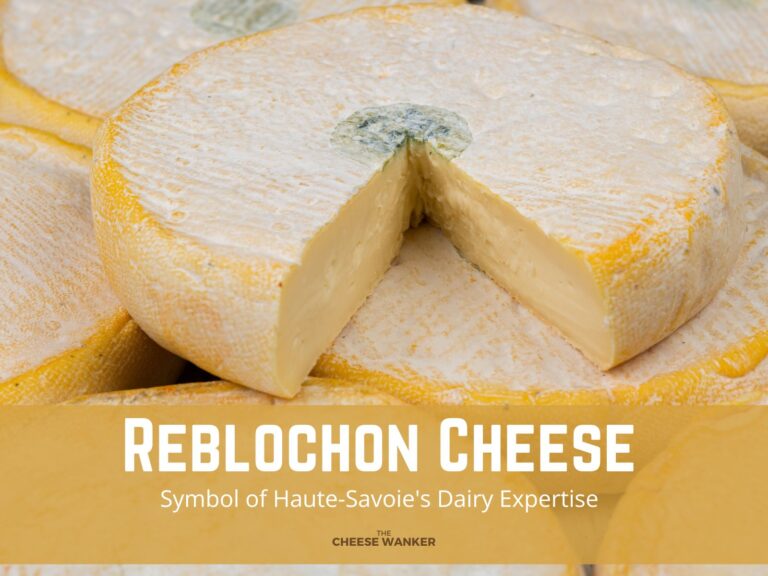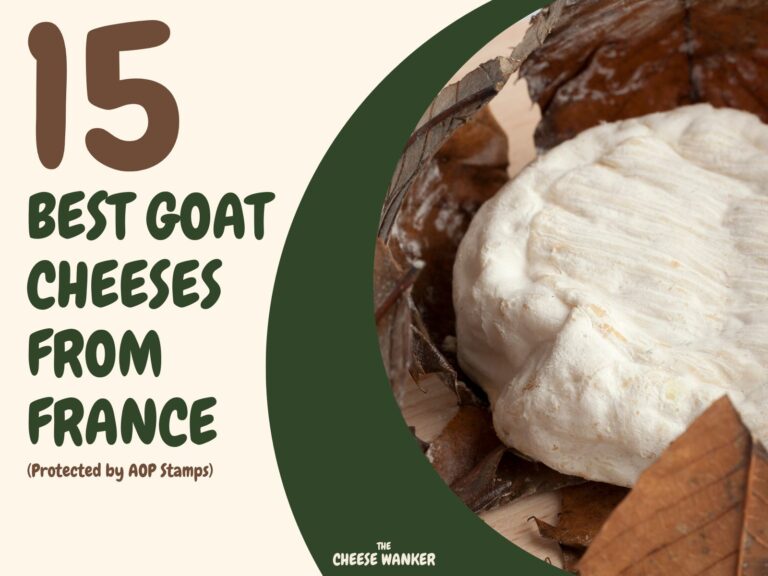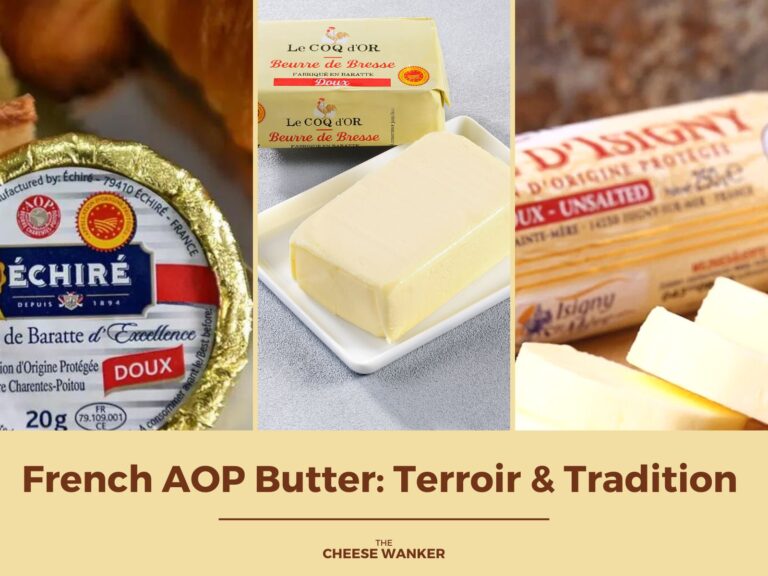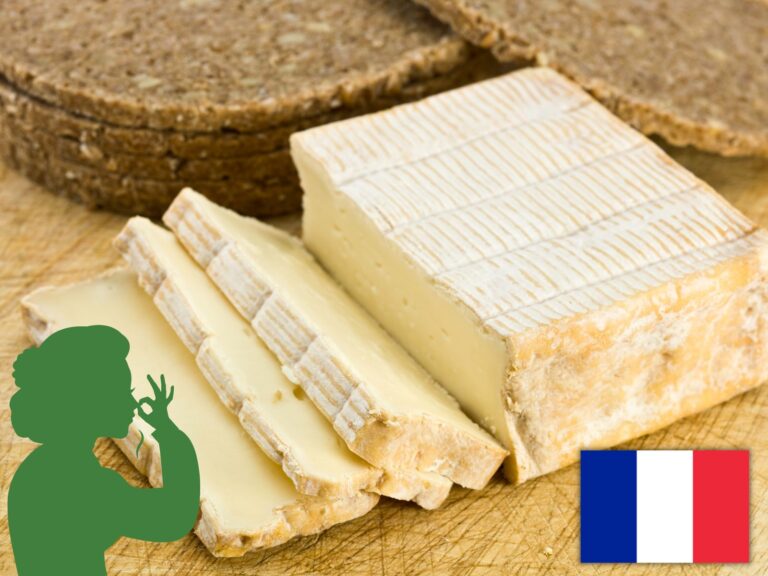France is known for its exceptional cheeses, many of which are protected by the Appellation d’Origine Protegee (AOP) designation. And the breed of cow used to produce the milk is a crucial factor in determining the quality and characteristics of the cheese. In this article, we’ll cover the best French cow breeds for cheesemaking according to the AOP.
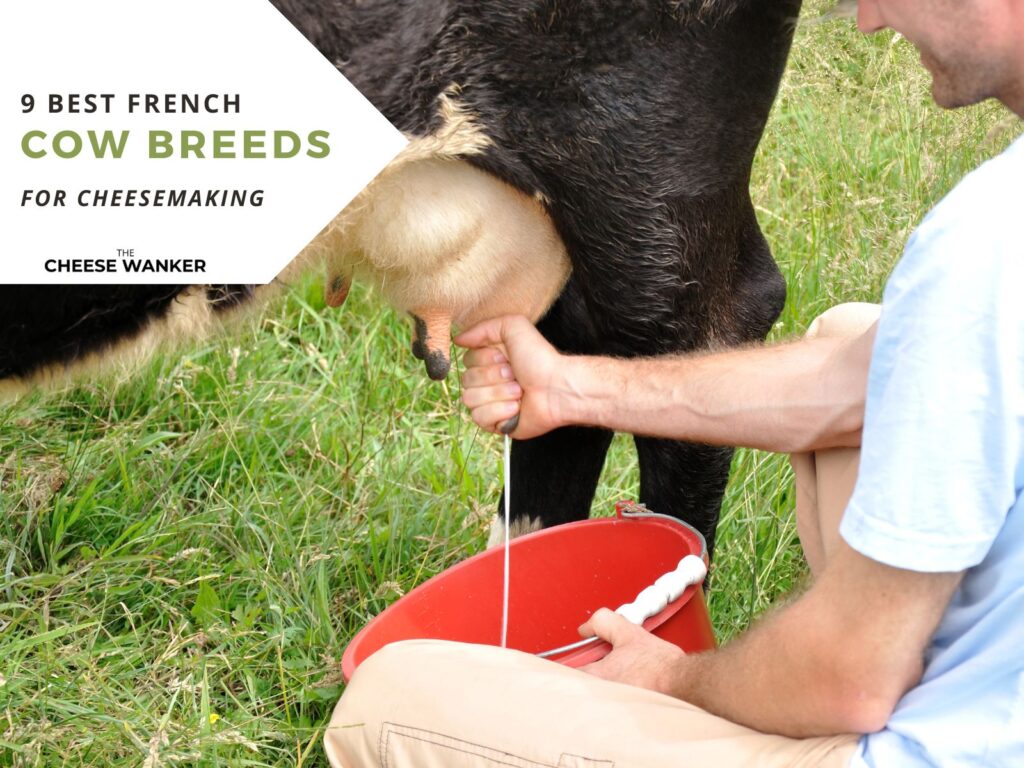
SEE ALSO: The best goat breeds by yield for cheesemaking →
What ingredients you need to make cheese
Before we dive into the best cow breeds for cheesemaking, let’s review the basic ingredients needed to make cheese. To make cheese, you need milk (preferably raw), starter culture, a coagulant and salt.
You can read more about each one of those ingredients in our comprehensive post on cheesemaking here.
Choosing the right cow breed
As a matter of fact, the choice of cow breed can greatly impact the flavour, texture and quality of cheese. In France, farmers have carefully selected cow breeds over time for their ability to produce milk with specific characteristics. And some of those include protein content, fat content, flavour and texture.
Best French cow breeds for cheesemaking
Presently, the AOP requires specific cow breeds for 18 of the 28 cow’s milk AOP cheeses in France. Accordingly, there are nine different breeds in the cahiers de charge for those cheeses. Let’s have a look at them in alphabetical order.
Abondance
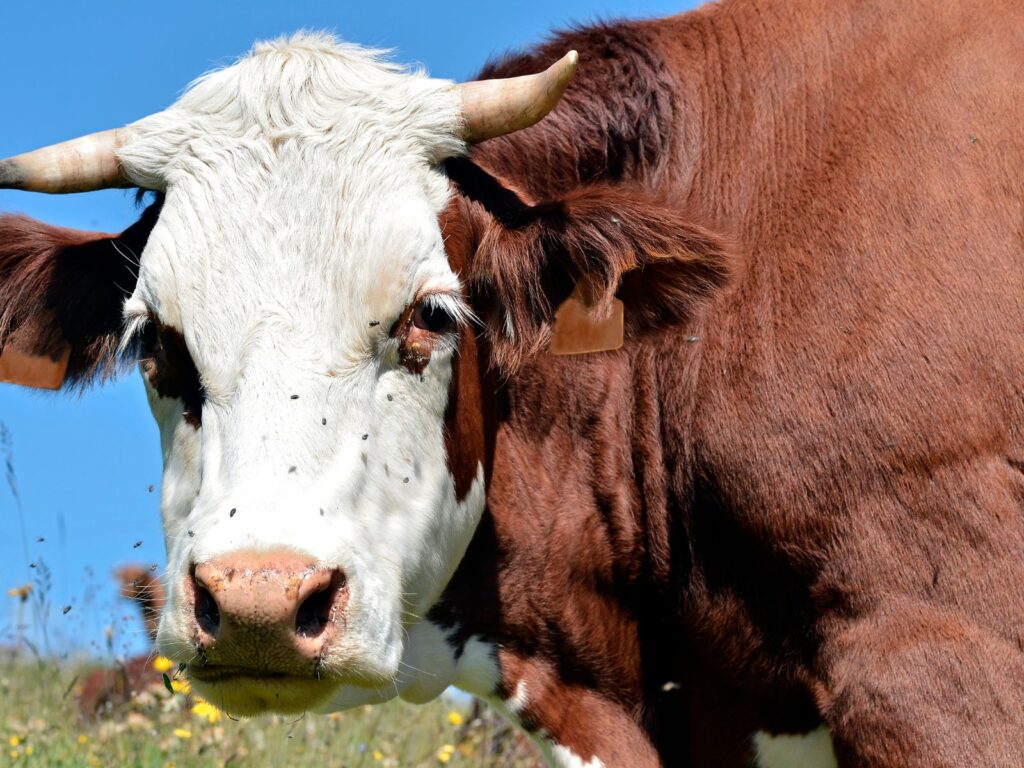
Firstly, Abondance cows originate from the Haute-Savoie region of the French Alps. It is a medium-sized breed, with a distinctive dark brown coat and a white face. Moreover, Abondance cows are known for their hardiness and adaptability to mountainous terrain.
In terms of milk production, Abondance cows are moderate producers, yielding an average of 5500 kg per year¹. However, their milk is prized for its rich and creamy qualities, with high fat and protein content. Local cheesemakers primarily use this milk for the production of Abondance cheese.
Aubrac
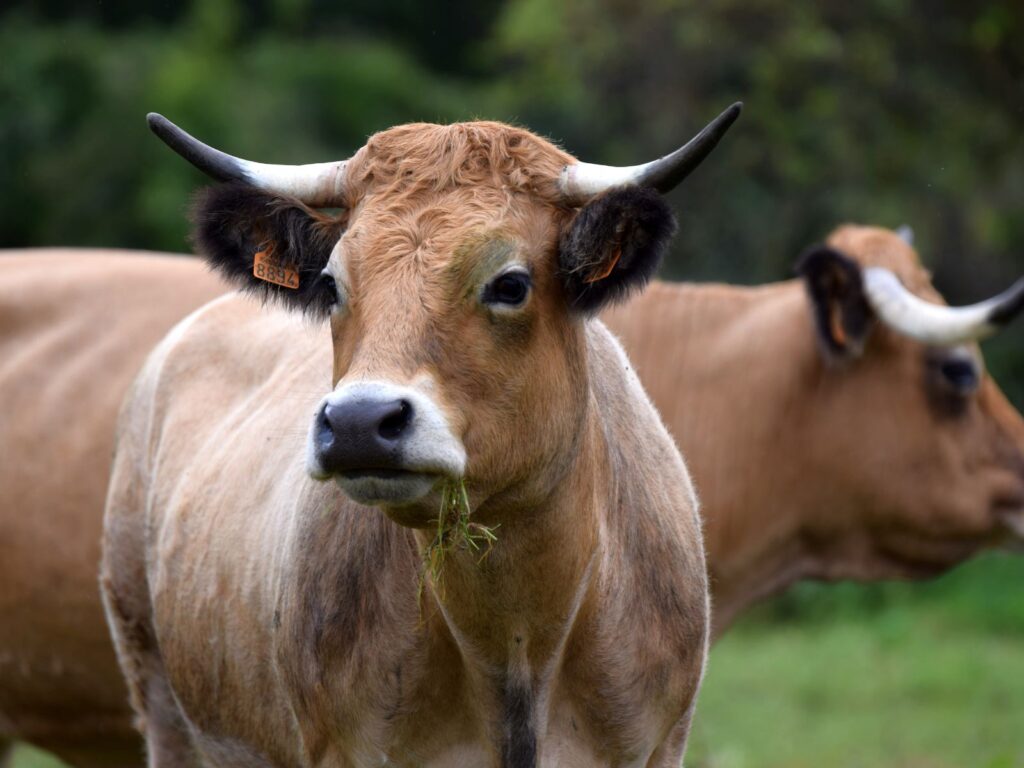
Next, we have the Aubrac cow breed. Aubrac cows hail from the Aubrac plateau in southern France. They are a medium to large-sized breed, with a distinctive light-coloured coat and curved horns. Furthermore, Aubrac cows are hardy and well-adapted to the rugged terrain of their native region.
As a matter of fact, Aubrac cows are low producers of milk, yielding an average of 3500 kg per year¹. However, cheesemakers favour this breed’s milk for its rich and creamy texture and high fat content. As a result, artisans in the Aubrac region predominantly use this milk for the production of artisanal cheeses such as Laguiole.
Brune
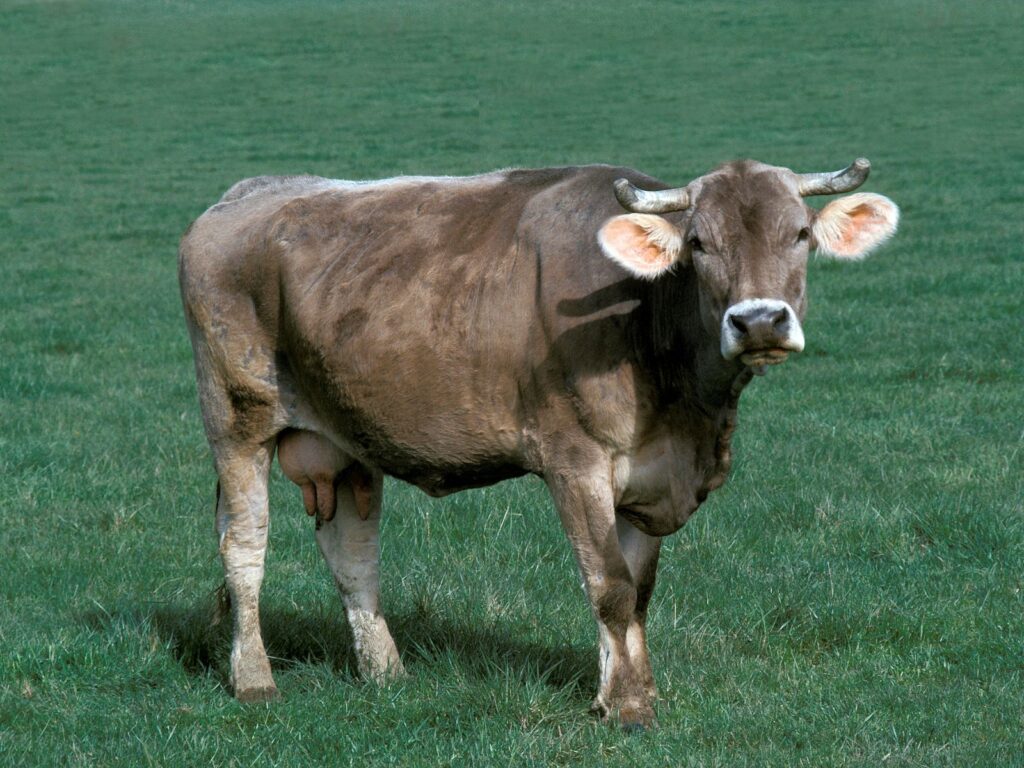
Also known as Brown Swiss, the Brune cow breed originates from Switzerland. It is a large-sized breed, with a distinctive light brown to greyish-brown coat and a broad, angular body. In fact, Brune cows have a docile temperament and adapt very well to hot and dry conditions.
Actually, Brune cows are the highest milk producers of all AOP breeds, yielding an average of 9000 kg per year¹. Their milk is highly valued for its high casein content. In France, cheesemakers use milk from this breed to make cheeses like Epoisses and Langres.
Montbéliarde
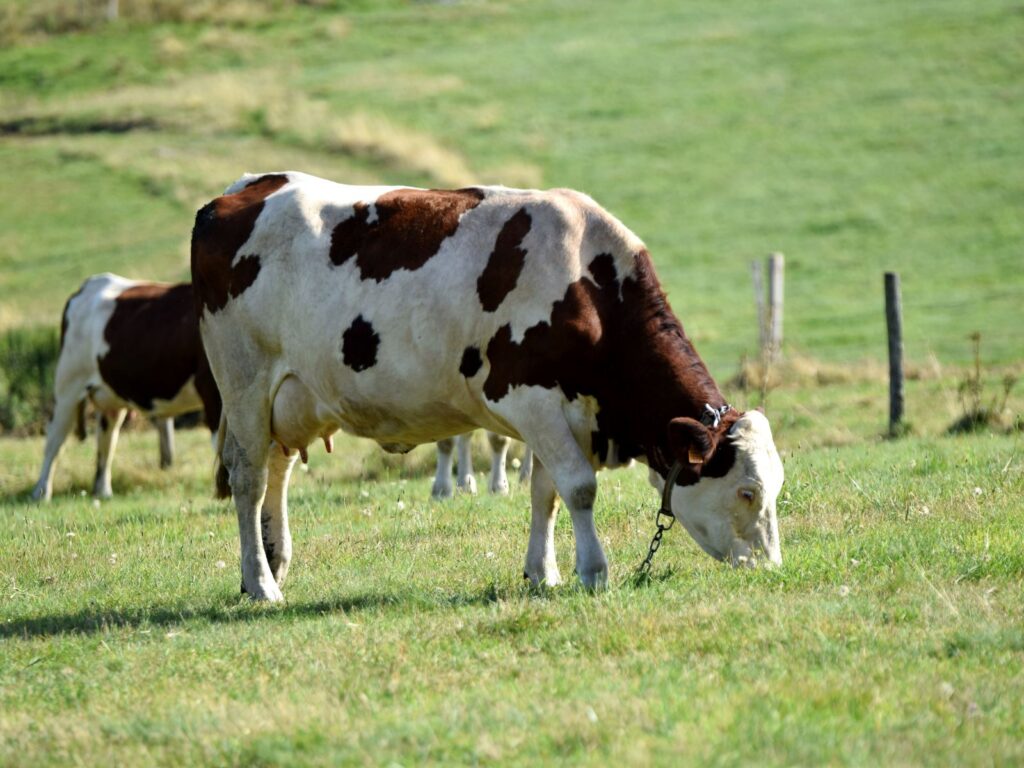
The Montbéliarde cow breed originates from the Franche-Comté region of eastern France. It is a medium-sized breed, with a distinctive red and white coat. Featuring in a whopping 10 AOP cheeses, Montbéliarde milk is the most dominant cow breed in this landscape.
Montbéliarde cows are the second highest milk producers on our list, yielding an average of 8800 kg per year¹. Their milk has a high protein and fat content, making it suitable for cheesemaking. Consequently, Montbéliarde milk is in cheeses like Comté, Mont d’Or, Morbier and Reblochon.
Normande
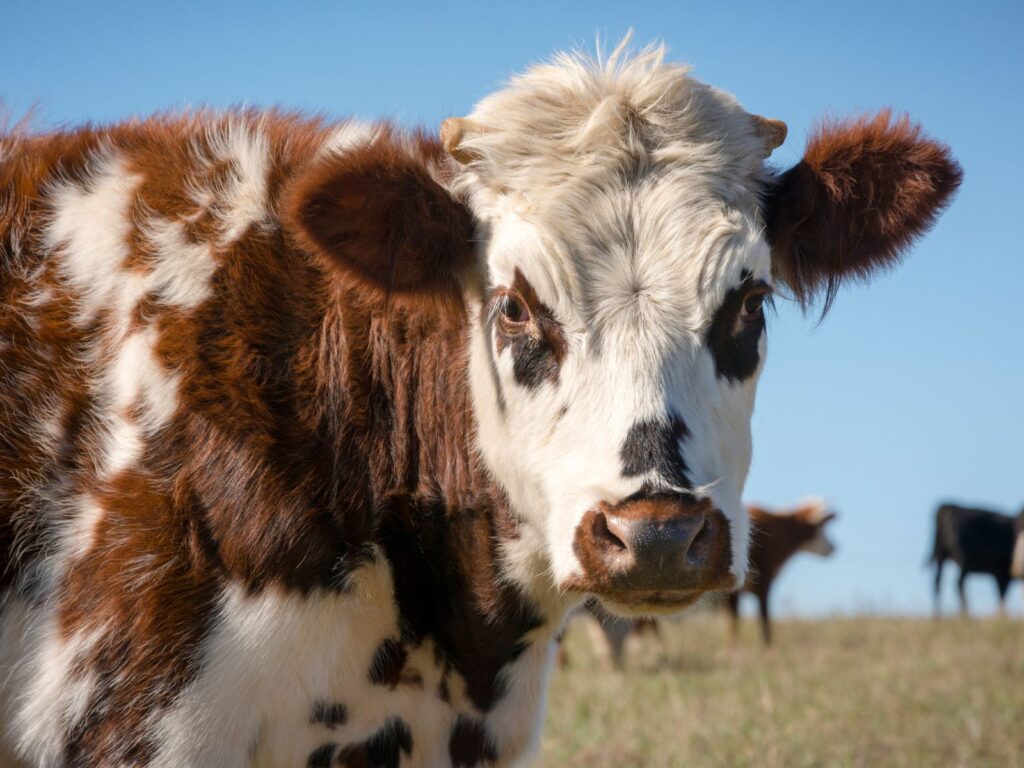
Next, we have one of France’s most famous cow breeds. Unsurprisingly, Normande cows originates from the Normandie region of France. However, this breed is believed to have descended from cows that the Vikings brought to northern France in their drakkars.
It is a medium to large-sized breed, with a distinctive brown and white coat. Moreover, one distinct feature of this breed is the brown spots around their eyes.
Normande cows are moderate to high producers of milk, yielding an average of 8100 kg per year¹. Their milk has an exceptional protein and fat profile. Thus, cheesemakers in Normandie use it to make the local AOP cheeses Camembert de Normandie, Livarot, Neufchâtel and Pont L’Évêque.
Salers
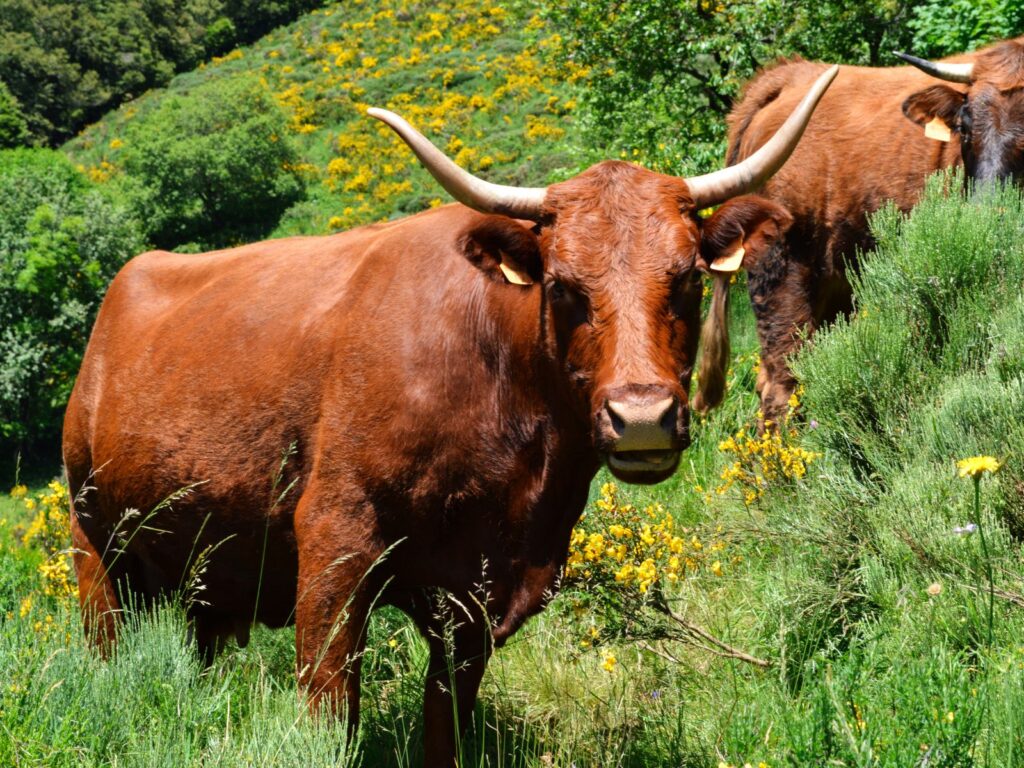
Salers cows originate from the Massif Central region of France. This medium to large-sized breed has a distinctive mahogany-coloured coat and long, curved horns. Moreover, it has a signature gruff (bourru in French) coat which has led to its French nickname “La Bourette“.
Salers cows are known for their ability to milk-feed two calves at a time. However, their milk production is the lowest on our list, clocking in at 2800 kg per year¹. Having said that, Salers milk has a unique creamy texture and rich flavour. While the AOP does not specify a breed for the Salers cheese, there is one subcategory called Tradition Salers that is exclusively made with this milk.
Simmental Française
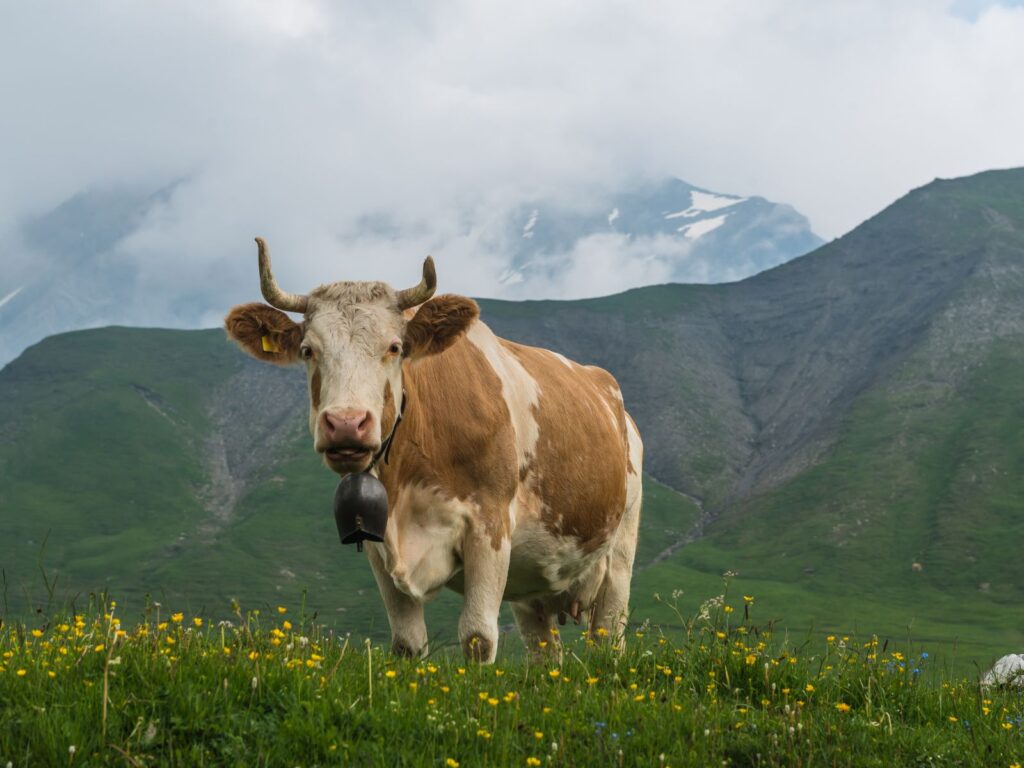
The Simmental Française cow breed, also known as the French Simmental, descends from the Swiss Simmental cows. Presently, the French subspecies calls Alsace, Franche-Comté, Bourgogne and Rhône-Alpes home. Simmental Française cows are a large-sized breed, with a distinctive red and white coat.
Simmental Française cows produce a moderate to high amount of milk, averaging 7800 kg per year¹. Currently, cheesemakers use their milk in AOP cheeses like Bleu de Gex, Laguiole and Morbier.
Tarentaise (Tarine)
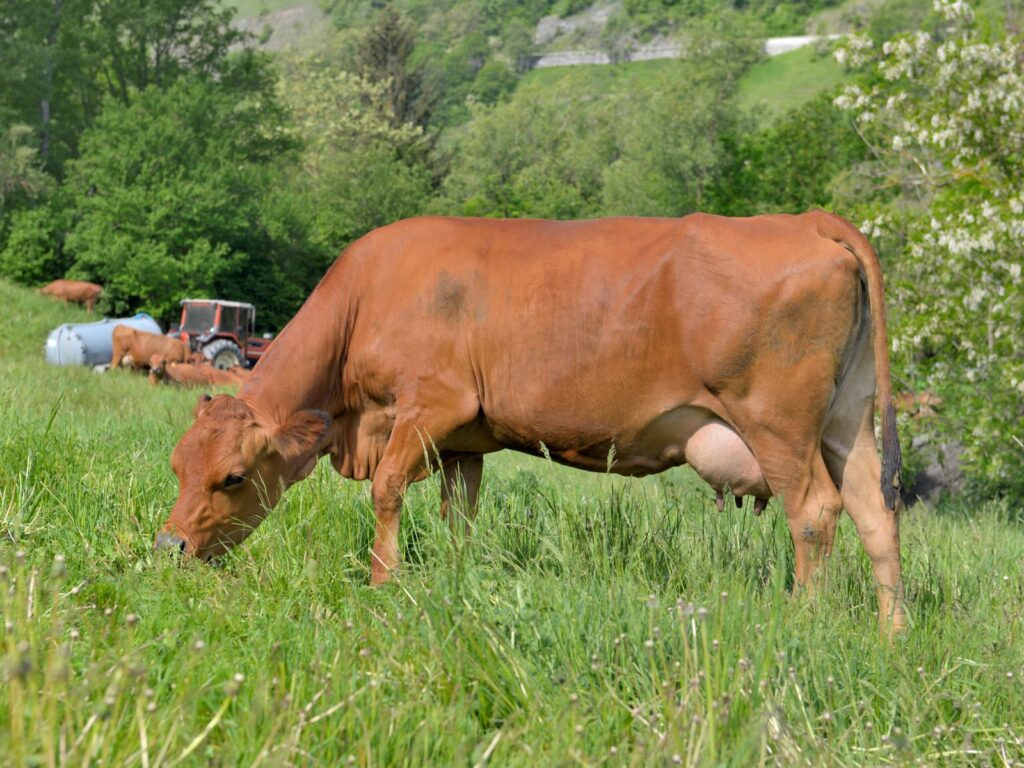
Tarentaise cows hail from the Tarentaise Valley in the French Alps. It is a medium to large-sized breed, with a distinctive brown coat and a broad, lean body. As a matter of fact, this French breed is exceptionally well suited to extreme weather conditions. As a result, you will find them on pastures in the northern and southern Alps as well as the Massif Central.
Compared to the other French cow breeds, Tarine cows yield a moderate amount of milk, averaging 5200 kg per year¹. Moreover, the gorgeous flavour and texture of their milk explains their presence in traditional mountain cheeses like Beaufort and Tome des Bauges.
Villard de Lans (Villarde)
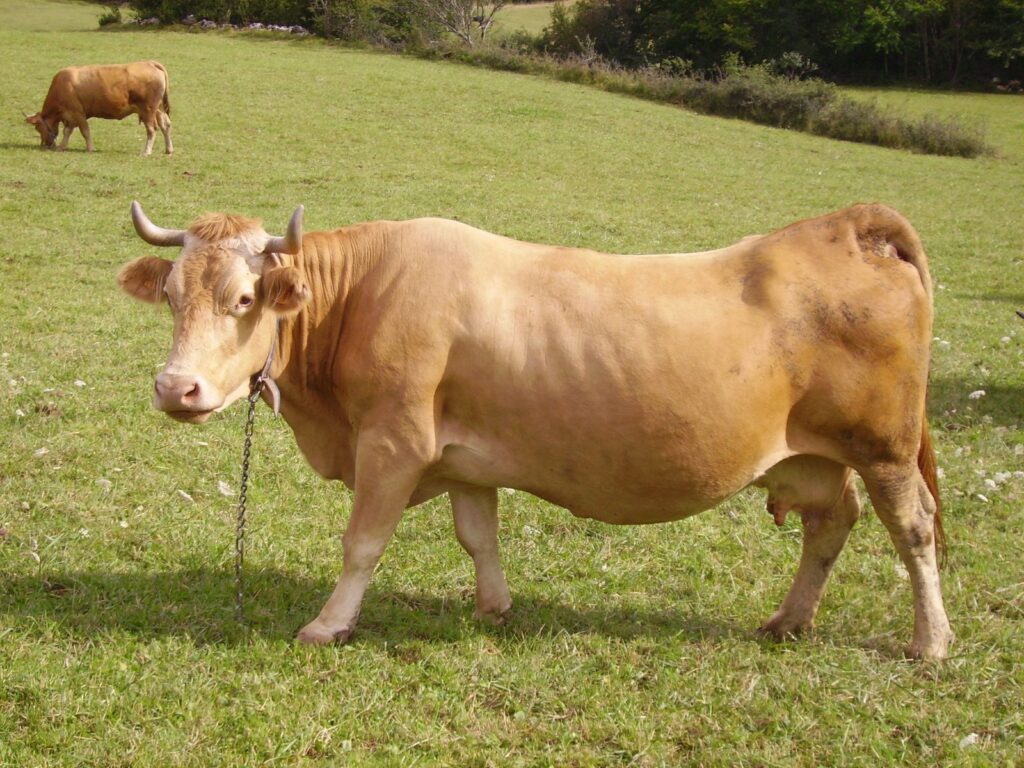
Finally, we have the Villarde cow. This breed finds its roots in the Vercors region in the French Alps. It is a medium-sized breed, with a distinctive beige coat and a sturdy, well-proportioned body. Undoubtedly, the locals favour Villard de Lans milk because of its high fat content.
While their milk production is on the low side (3900 kg per year¹), the cheese yield is quite reasonable. And the AOP dictates that it is the only milk allowed in the production of the AOP cheese, Bleu du Vercors-Sassenage.
What about the remaining AOP cheeses?
If you’ve followed us so far, you will have worked out that there are 10 cow’s milk AOP cheeses that do not have specified breeds. Some examples include Bleu d’Auvergne, Cantal, Munster and Saint-Nectaire.
While the AOP do not mention specific breeds of cows in their cahiers de charge, they do require that cheesemakers use only local milk. What they mean by local milk is that the cows have to be born and raised within the specific area of production for the AOP cheese.
Summary: Breed matters!
Without a doubt, choosing the right breed of cow is a crucial factor in determining the quality and characteristics of cheese. When it comes to French cows and the AOP, the most popular breeds are Abondance (5), Montbéliarde (10) and Simmental Française (7).
Thank you for reading our post and we hope that you’ve taken something useful from the information. Are you considering making your own cow’s milk cheese? We’d love to hear from you in the comments below.
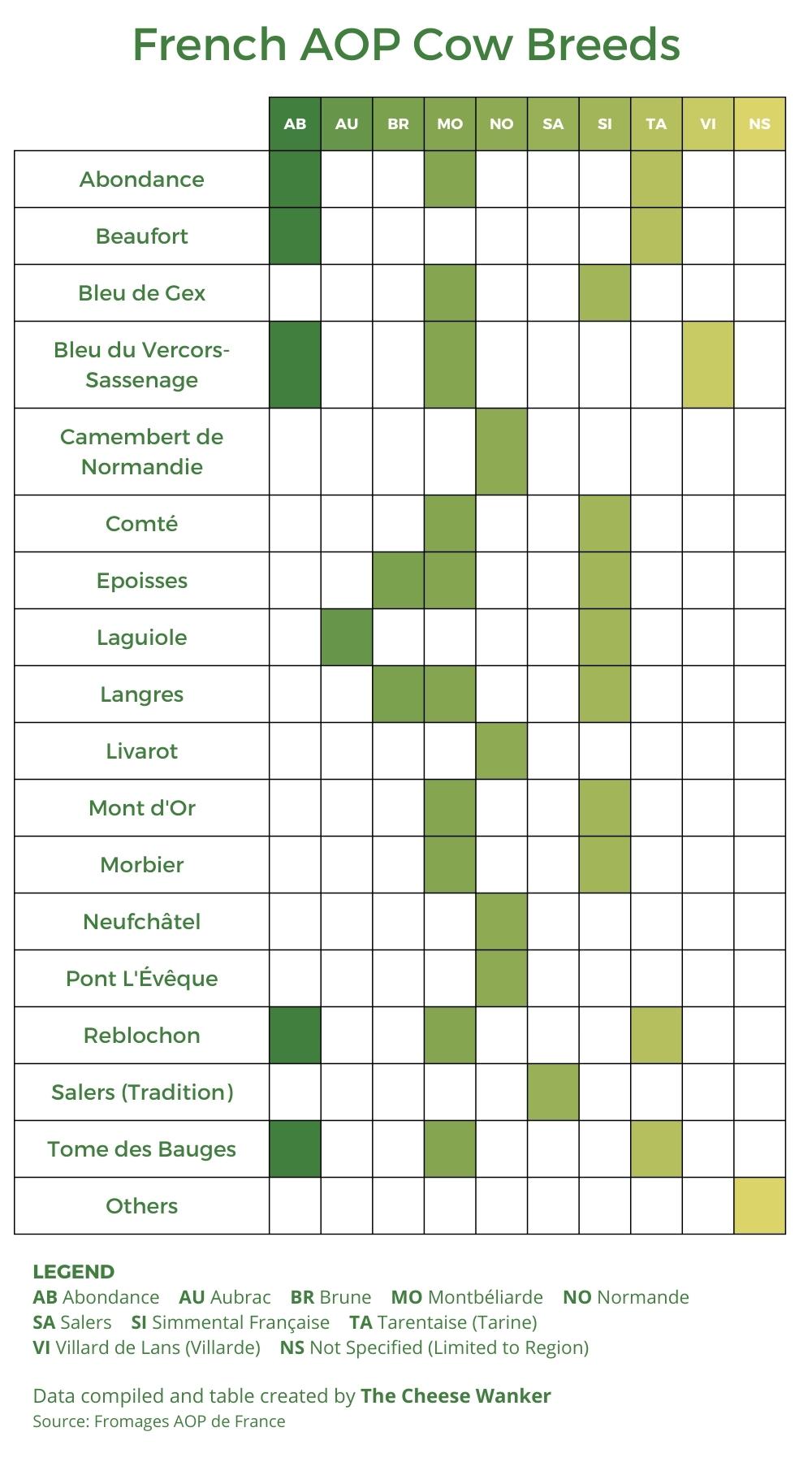
Reference
¹ Résultats de Contrôle Laitier Espèce Bovine France 2020
